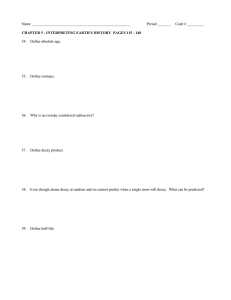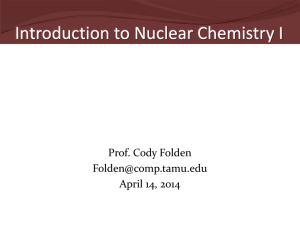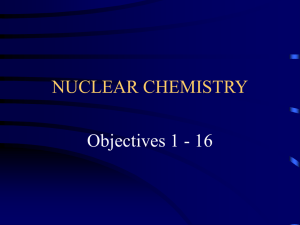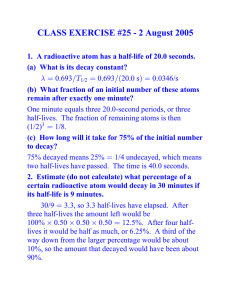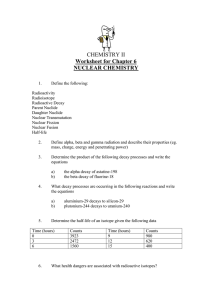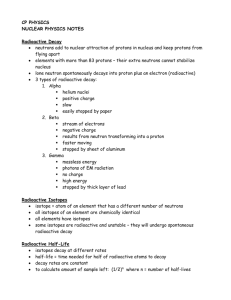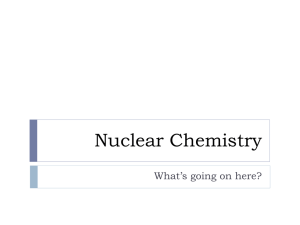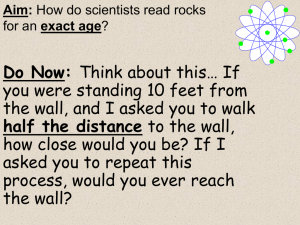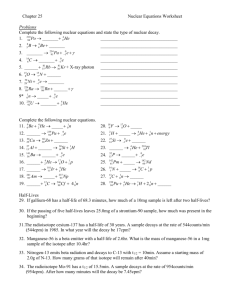Physics 11 Nuclear Physics Review Worksheet
advertisement
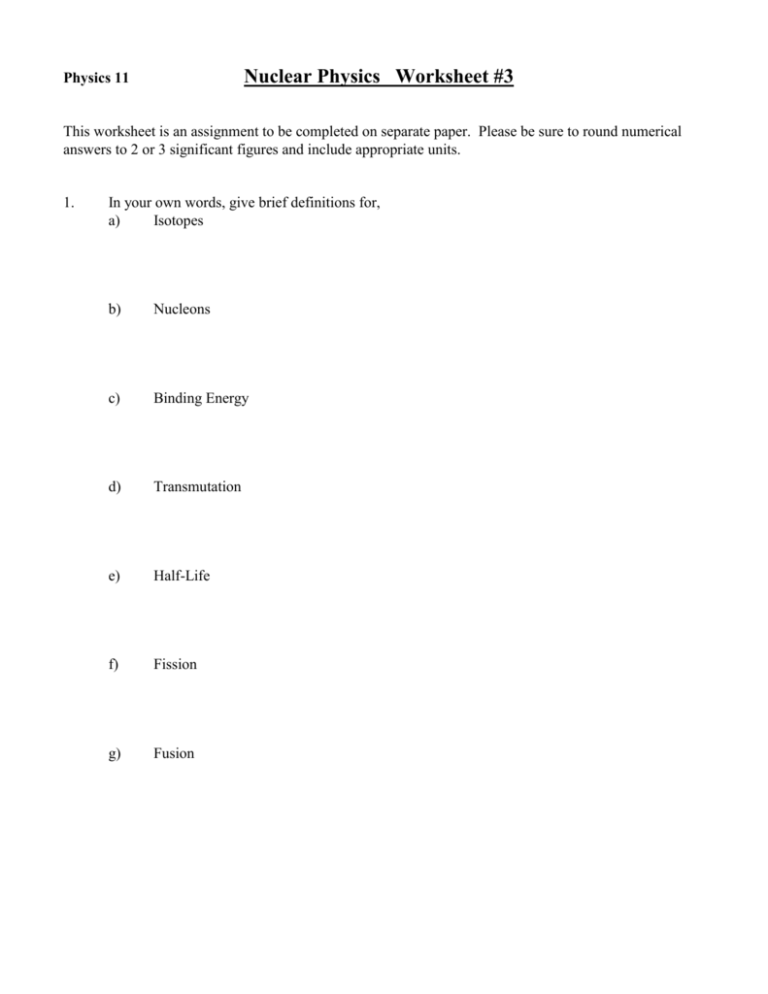
Nuclear Physics Worksheet #3 Physics 11 This worksheet is an assignment to be completed on separate paper. Please be sure to round numerical answers to 2 or 3 significant figures and include appropriate units. 1. In your own words, give brief definitions for, a) Isotopes b) Nucleons c) Binding Energy d) Transmutation e) Half-Life f) Fission g) Fusion 2. All isotopes have the same # of protons and # of electrons, but a different # of neutrons 2. In a nuclear reactor, what are the functions of? a) Moderators b) Control Rods 3. List 2 advantages and 2 disadvantages of nuclear power. 4. Explain the ways radioactive isotopes with short half-lives can be both more and less dangerous that isotopes with long half-lives. 5. Determine the missing numbers or symbols 40 136 a) b) c) Xe 19 ? 6. Determine the binding energy of 65 29 Cu in joules. 1 0 ? d) 0 1 ? 7. Determine the half life of a radioactive material that drops from a mass of 1200 grams to only 400 grams in 42 hours. 8. 60 For both of these elements, 226 88 Ra , 27 Co , with the help of your data table, a) Determine their number of protons, electrons, and neutrons b) Determine what type of radioactive decay they follow c) Write a balanced decay equation (do not worry about any γ rays) d) Determine the “mass defect” e) Determine the energy given off from each reaction f) What is the elements half-life? 9. Why do CANDU reactors use heavy water instead of normal water? Heavy water acts as a moderator (slows neutrons which speeds up reaction) and also as a coolant in the reactor core. 10. . Balance the following reactions and indicate if they are: Alpha Decay, Beta Decay, Fission, or Fusion Po a) 214 84 b) 4 2 He c) 1 0 n d) 131 53 I Pb 210 82 47Be U 235 92 0 1 Ba 143 56 3 01n

